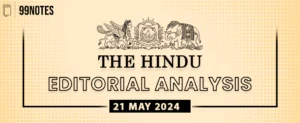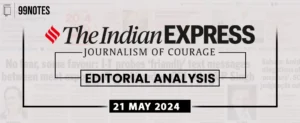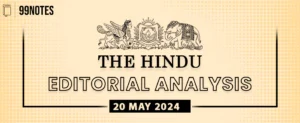(Source – The Hindu, Section – News, Page – 4) Topic: GS2 – Indian Polity – Statutory bodies UPSC candidates need awareness on NCW’s neutrality, transparency, and accountability concerning political affiliations for governance and ethics topics. |
| Context: |
|
Analysis of the news:
- The National Commission for Women (NCW) states it lacks information on political affiliations of Chairperson and Members.
- PIO response under RTI Act reveals NCW’s statutory setup by the Ministry of Women and Child Development.
- Government nominates NCW Chairperson and Members.
- PIO confirms no records on political participation or legality regarding such actions.
- Petitioner Raj Kapil witnessed an NCW Member attending BJP events, formerly serving in BJP’s national executive committee.
- NCW’s mandate includes evaluating women’s development progress under Union and State governments.
- Kapil argues NCW officials should maintain neutrality by not affiliating with political parties during their term.
- Lack of transparency raises concerns about accountability and potential bias in NCW decisions.
| More About National Commission for Women (NCW): |
● Establishment: The National Commission for Women (NCW) was established in 1992 under the provisions of the National Commission for Women Act, 1990. ● Mandate: The NCW is tasked with safeguarding and promoting the rights of women in India, ensuring their protection from discrimination and violence. ● Functions: It investigates and examines complaints related to women’s rights violations, conducts studies, and recommends legislative and policy measures for women’s empowerment. ● Awareness Programs: The NCW organises awareness campaigns, workshops, and seminars to raise awareness about gender issues and promote gender equality. ● Legal Advocacy: It provides legal aid and assistance to women facing discrimination or injustice, including cases of domestic violence, harassment, and dowry-related offences. ● Policy Advocacy: The NCW advocates for gender-sensitive policies and reforms at the national and state levels to address systemic issues affecting women’s rights. ● Research and Documentation: It conducts research, collects data, and publishes reports on various aspects of women’s issues to inform policymaking and advocacy efforts. ● Collaboration: The NCW collaborates with government agencies, civil society organisations, and international bodies to advance women’s rights and gender equality initiatives. Potential implications of political bias from statutory bodies: ● Undermining Objectivity: Political bias in statutory bodies can compromise their impartiality and objectivity in decision-making processes. ● Selective Enforcement: Political influence may lead to selective enforcement of laws and regulations, favouring certain groups or individuals aligned with the ruling party. ● Erosion of Public Trust: Perceived political bias erodes public trust in statutory bodies, undermining their legitimacy and credibility. ● Violation of Rights: Political interference may result in the violation of human rights, undermining the principles of democracy and rule of law. ● Impediment to Accountability: Political bias can impede accountability mechanisms, hindering transparency, and accountability in governance. ● Impact on Policy: Statutory bodies influenced by political bias may recommend or implement policies that serve partisan interests rather than the public good. ● Threat to Democracy: Political bias in statutory bodies poses a threat to democratic governance, as it undermines the principles of separation of powers and checks and balances. ● Need for Independence: Ensuring independence and autonomy of statutory bodies from political interference is essential to uphold their integrity and effectiveness in fulfilling their mandates. |
| PYQ: Which steps are required for constitutionalization of a Commission? Do you think imparting constitutionality to the National Commission for Women would ensure greater gender justice and empowerment in India? Give reasons. (250 words/15m) (UPSC CSE (M) GS-2 2020) |
| Practice Question: Discuss the significance of ensuring political neutrality in statutory bodies like the National Commission for Women (NCW). How does political bias affect their credibility and effectiveness? Provide examples and suggest measures to uphold impartiality. (250 Words /15 marks) |











